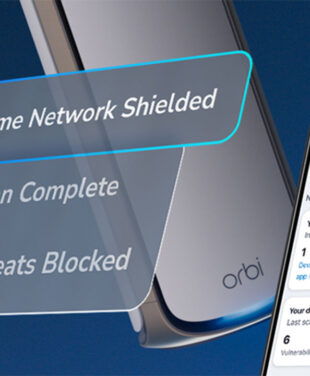Your smart home already has a lot going on. The camera on the porch, the NAS humming in a corner, the smart light bulbs, and the fridge that wants a firmware update again, make interactions fun and efficient. But here’s a not-so-fun fact: most IoT devices ship with one or more built-in vulnerabilities.
IN THIS ARTICLE
We’re talking about IoT Vulnerabilities such as known CVEs that never got patched, hardcoded credentials that can’t be changed, default usernames and passwords that nobody bothers to update or misconfigured or unsecured cloud storage buckets leaking your device data to a bad crowd.
In other words, even before you plug them in, many smart devices are already a security liability. But then some users unknowingly make things worse: they deliberately expose these devices to the internet.
Think about it: NAS boxes (Network Attached Storage) open to the whole world so you can get to your movies from the beach. Router admin panels accessible from anywhere, because remote control sounds handy. Android set-top boxes or NVRs with open SAMBA shares. The intention is convenience, but what end up doing is taking a potentially vulnerable device and hanging a neon sign on it that says: “Free shell access here.”
Misconfiguration: the vulnerability you add yourself
When you expose a smart device to the public internet, you’re playing a dangerous game. Most people don’t do this with malicious intent – they just want to access their stuff remotely. But unless you fully understand the risk you’re accepting, this isn’t a configuration choice. It’s a misconfiguration.
Remember, if a device has even one of the issues mentioned above, putting it on the internet is like dropping a cracked phone in the ocean and expecting it to survive. It might work for a while, but the device will eventually show up on a mass scan and get hijacked within minutes.
There are safer alternatives
Remote access doesn’t have to mean public exposure. There are better, safer ways to do this:
- Vendor-provided over-the-cloud access: Many vendors offer secure relay services to access devices through the cloud, often using encrypted channels. These aren’t perfect, but they’re usually safer than exposing ports (and devices).
- Local VPN: You can set up a VPN endpoint on your router or a Raspberry Pi, and access your entire home network securely. This is a security researcher’s favorite means of connected to isolated, local-only infrastructure.
Know what you’re dealing with
Part of the problem is that IoT users don’t always know how vulnerable their devices are. There’s no big red warning light that flashes when your webcam ships with a CVE from 2017. That’s where security solutions with built-in vulnerability scanning, like NETGEAR Armor powered by Bitdefender, shine. These tools don’t just protect you from malware – they actively scan your network and tell you if one of your devices has a known issue, is using a default password, or is open to the internet.
You can’t secure what you don’t understand. And letting users know when something is vulnerable is the first step toward giving them control over their own network.




